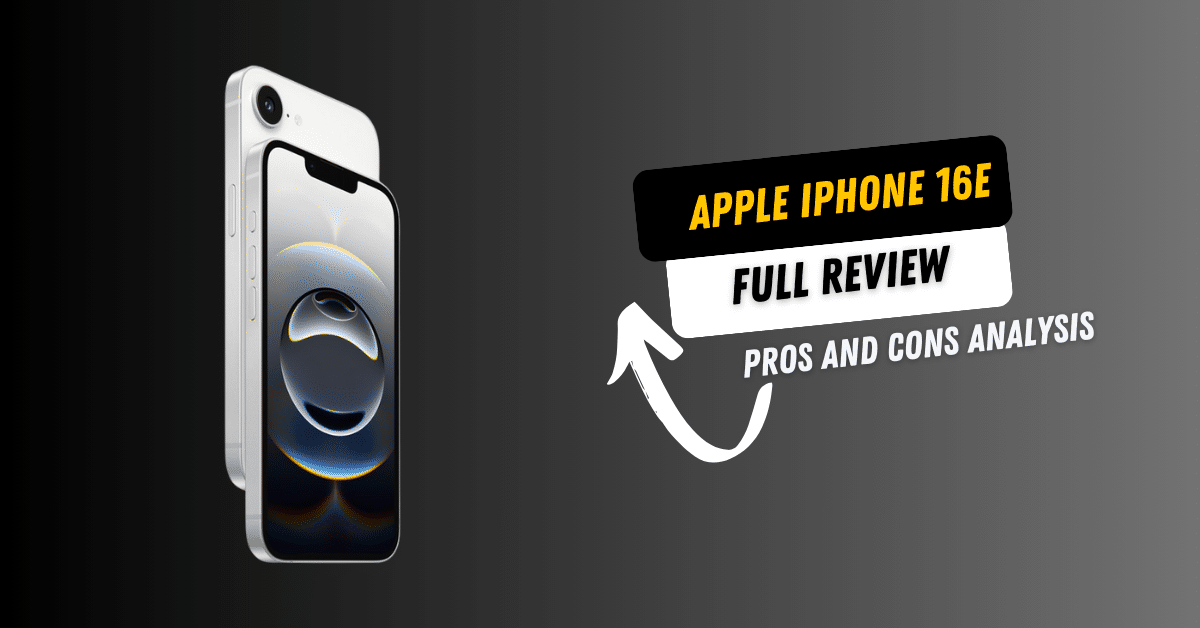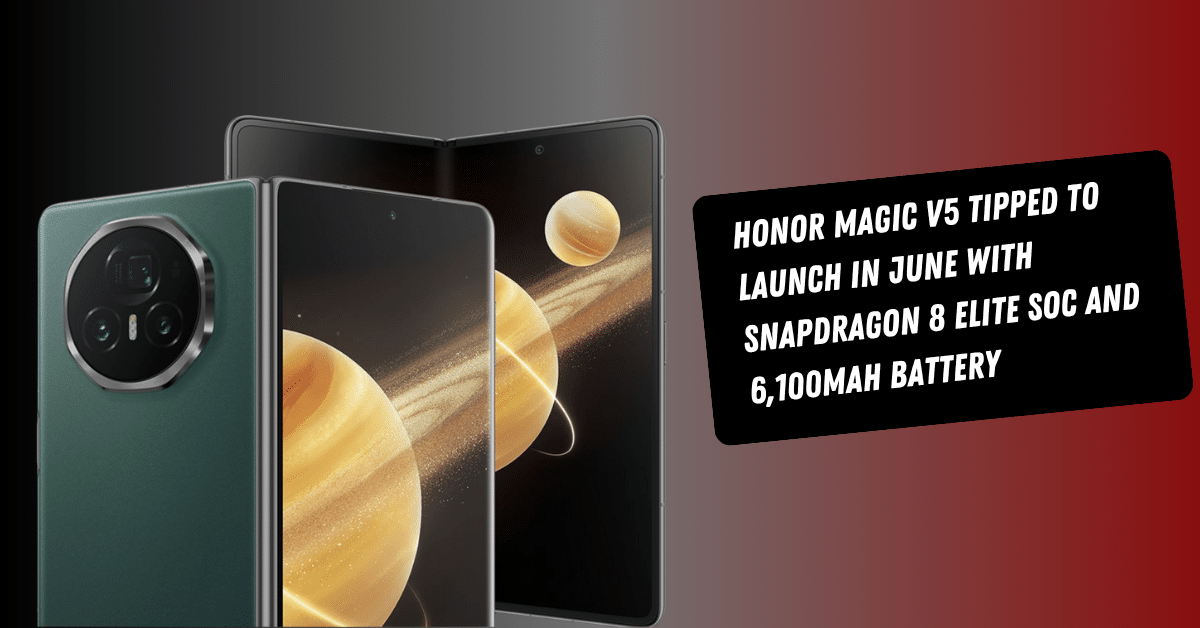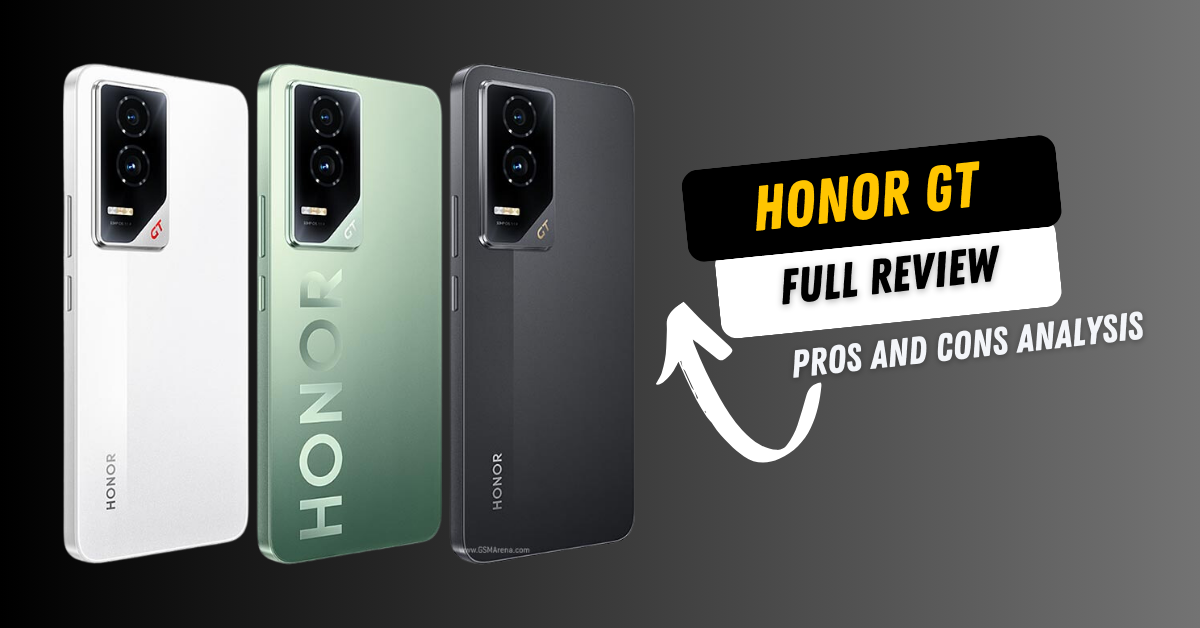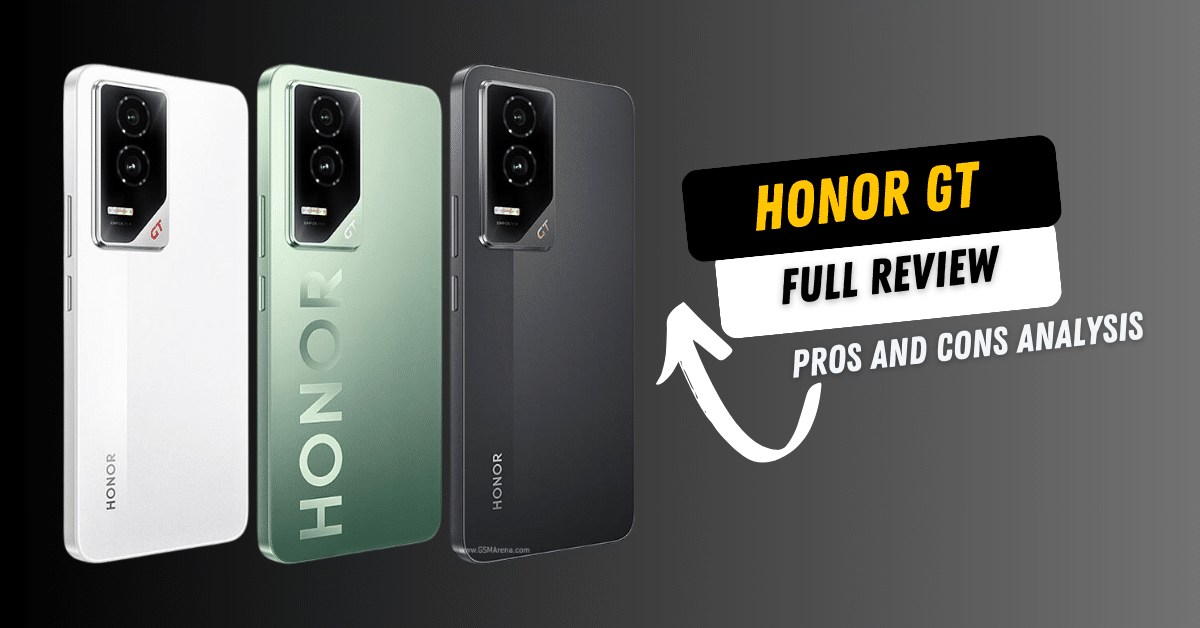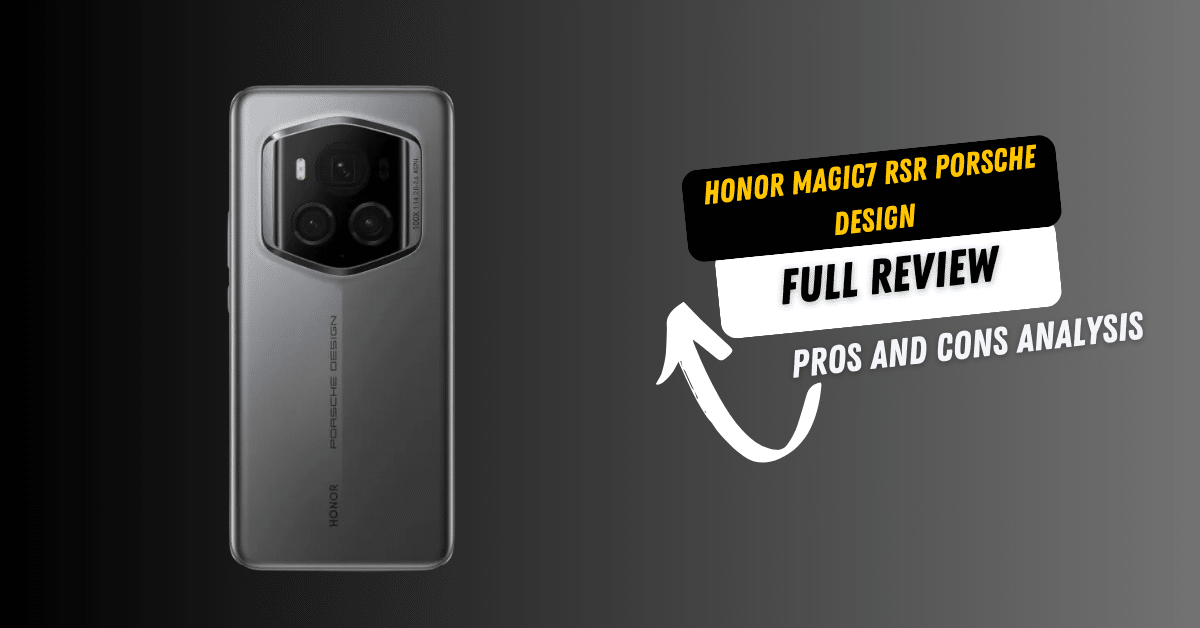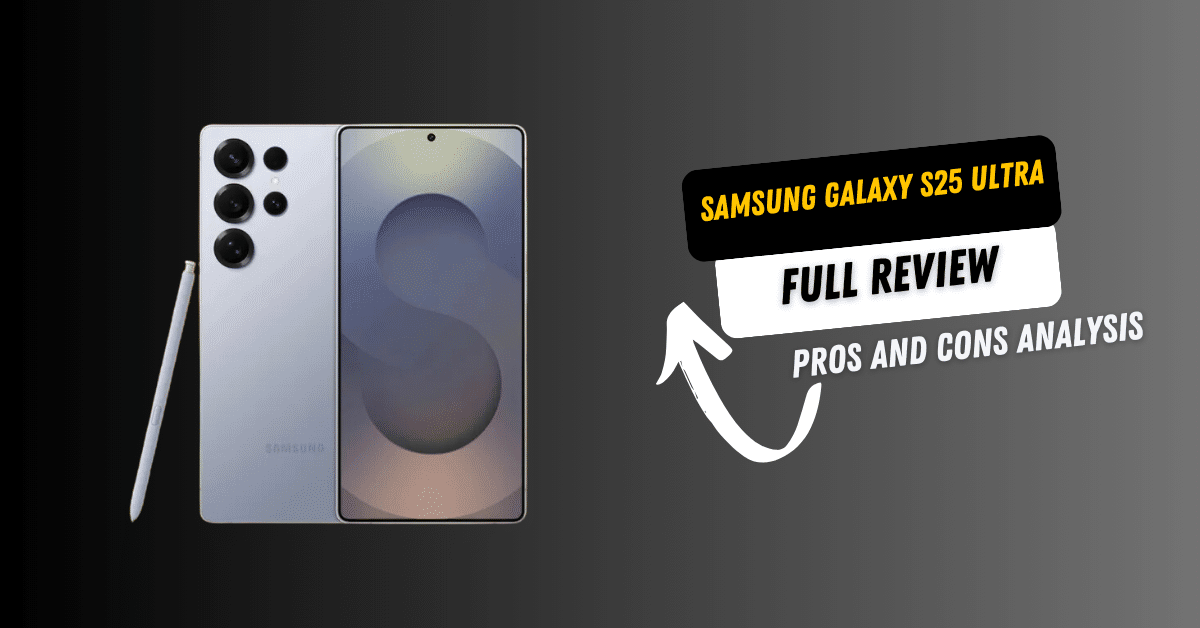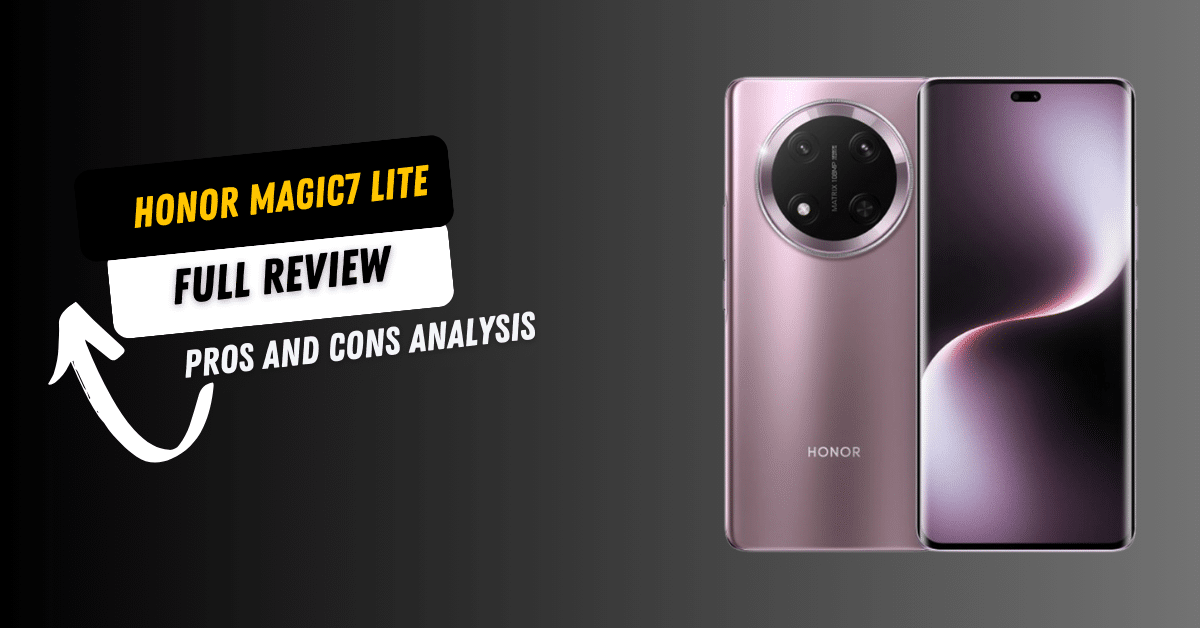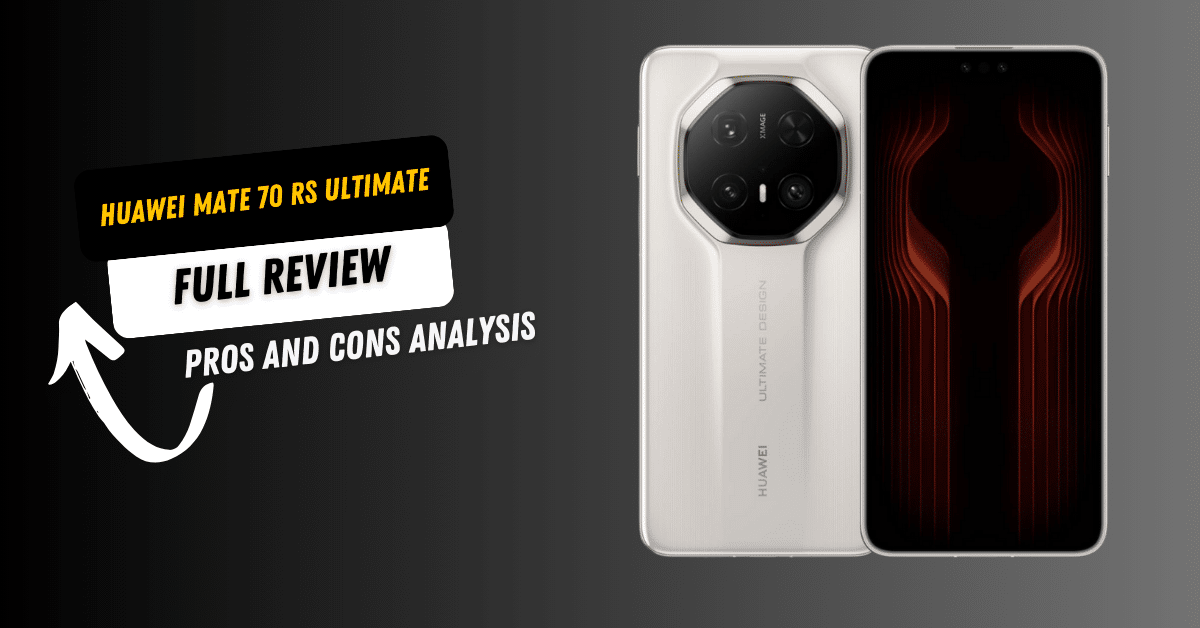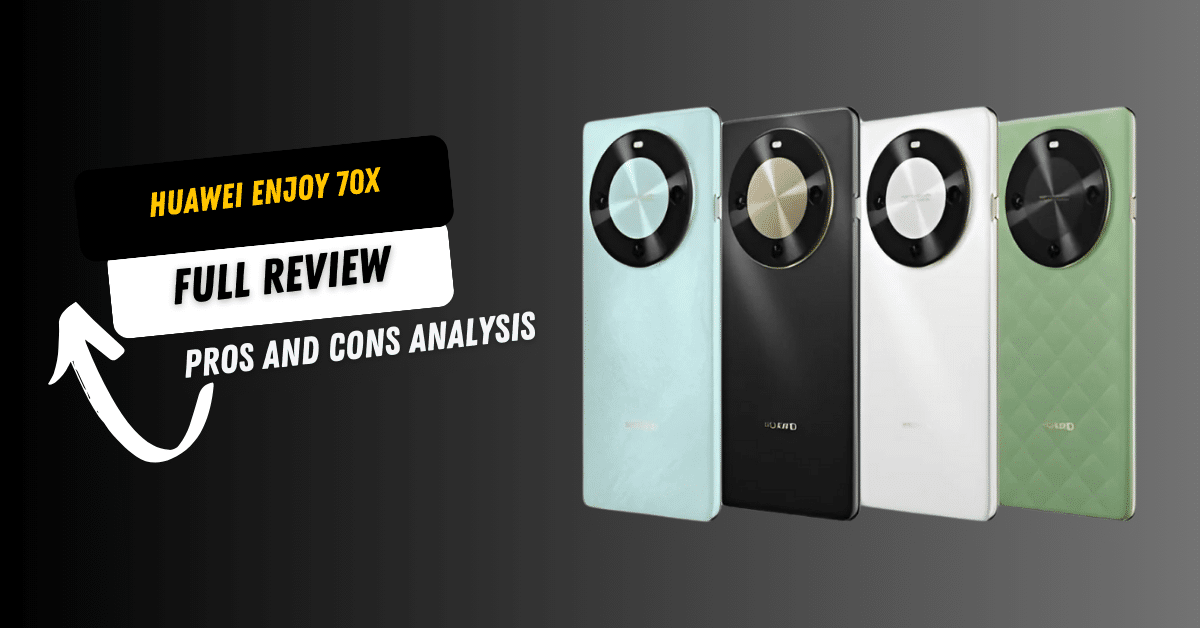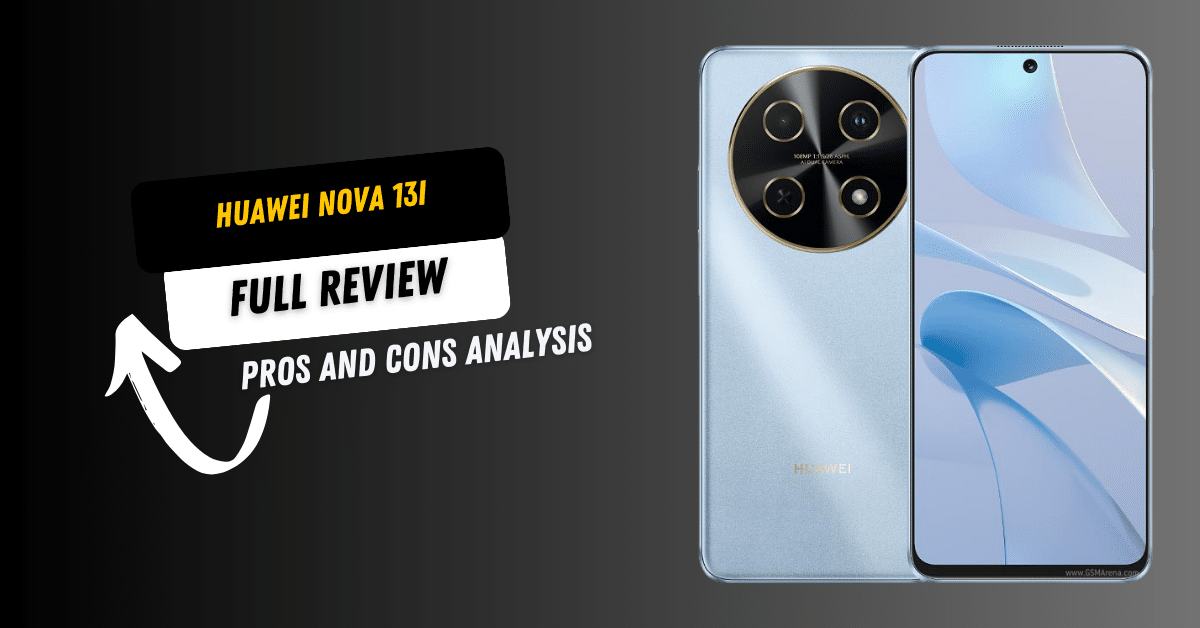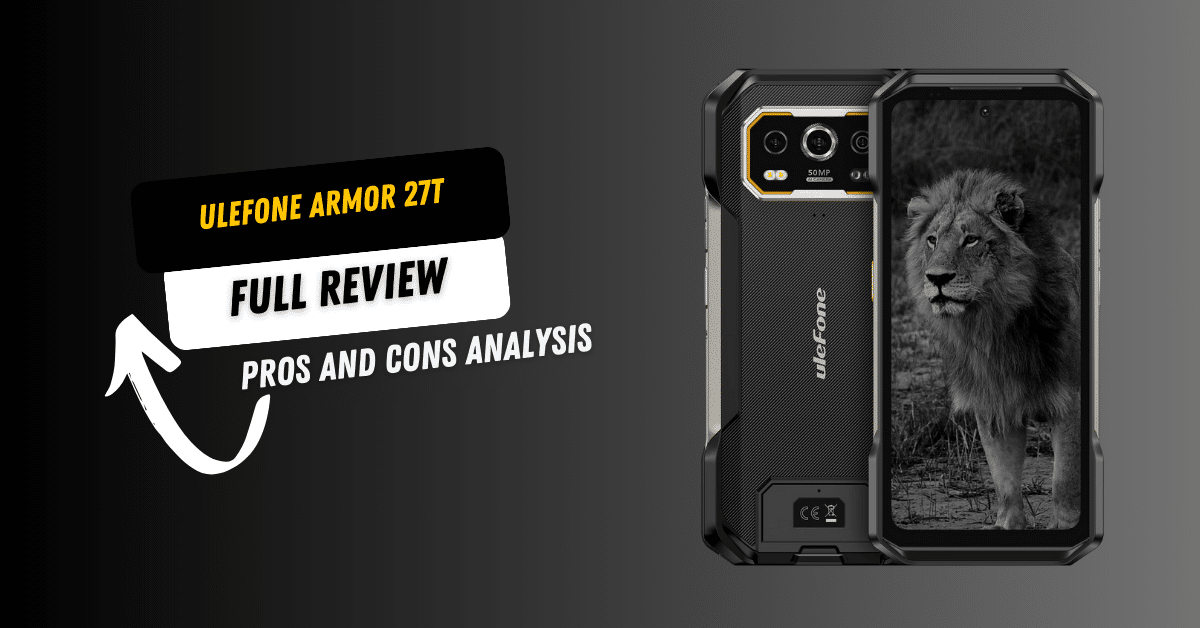The Apple iPhone 16e is the latest addition to Apple’s ever-evolving smartphone lineup, catering to tech enthusiasts, Apple fans, and users looking to upgrade from older models like the iPhone 8 Plus, iPhone X, or iPhone SE. With Apple’s commitment to innovation, this model brings a mix of hardware advancements, enhanced software capabilities, and improved connectivity options. However, while it introduces exciting features, it also raises some concerns regarding practical usability, pricing, and competition with Android alternatives.
For users considering an upgrade from the iPhone 15 or iPhone 15 Pro, the iPhone 16e promises improvements in battery life, processing power, and AI-driven software enhancements. The A18 chipset, combined with Apple Intelligence features, makes it a solid contender in the premium smartphone market. But does it justify its price tag?
When it comes to affordability and availability, the iPhone 16e is expected to be sold through major retailers, including Best Buy, though the value proposition remains debatable. While it boasts a refined OLED display, improved connectivity via the Apple C1 modem, and enhanced camera technology, some may question whether the upgrade is significant enough to warrant a purchase.
In this in-depth review, we will explore its strengths, weaknesses, and how it stacks up against previous iPhones and competing Android phones. By examining real-world usage scenarios, battery performance, camera capabilities, and new AI features, this review aims to provide an honest perspective on whether the iPhone 16e is truly worth the investment.
Design & Display

The Apple iPhone 16e maintains Apple’s signature design language while introducing subtle refinements aimed at enhancing the user experience. With its OLED display and Ceramic Glass technology, it promises improved durability and a sharper visual experience. However, while the display enhancements bring noticeable benefits, some design choices may raise concerns among long-time Apple users and tech enthusiasts.
OLED Display & Ceramic Glass Technology
The iPhone 16e features an OLED panel, delivering deep blacks, vibrant colors, and high contrast levels. This is a notable step up for users upgrading from older models like the iPhone X or iPhone 8 Plus, but for those coming from the iPhone 15 Pro, the difference might not be as drastic. The addition of Ceramic Glass technology enhances scratch resistance and durability, making the device more resilient against accidental drops. However, real-world durability tests will determine if it truly outperforms previous models.
Comparison with iPhone 15 Pro & Android Rivals
When placed side by side with the iPhone 15 Pro, the iPhone 16e showcases slightly thinner bezels but still retains the Dynamic Island. While the feature remains useful for multitasking and notifications, some users may feel that Apple is recycling old design elements rather than introducing something groundbreaking.
Compared to Android competitors, particularly flagship models with higher Hz refresh rates and minimal bezels, the iPhone 16e still lags in screen-to-body ratio. Many Android phones offer fully immersive displays without interruptions, making Dynamic Island seem like a dated design choice rather than an innovation.
Refresh Rate & Display Experience
One of the key display metrics that affects everyday usability is the refresh rate. While Apple has improved the display experience over the years, the iPhone 16e’s refresh rate may still not match the ultra-fluid experience offered by some Android competitors. Higher Hz refresh rates ensure smoother scrolling, better gaming responsiveness, and overall fluid animations, and while Apple may have optimized iOS for efficiency, some users might expect more from a modern flagship device.
Durability Concerns & the “Frankenphone” Debate
The Ceramic Glass technology undoubtedly enhances scratch resistance, but drop protection remains questionable, as Apple has historically struggled with making iPhones truly shatterproof. Additionally, early leaks have suggested that the iPhone 16e follows a “Frankenphone” approach—a mix of old and new design elements that don’t entirely feel cohesive. This may raise concerns for those who were expecting a fresh new look rather than a slightly refined version of previous models.
Performance & Hardware
The iPhone 16e brings a significant leap in processing power, thanks to the A18 chipset and an enhanced graphics core. Apple claims better efficiency, improved thermal management, and faster AI-driven performance, but real-world usage paints a more nuanced picture.
A18 Chipset & Enhanced Graphics Core
At the heart of the iPhone 16e lies the A18 chipset, which boasts higher processing speeds and energy efficiency compared to its predecessor. The enhanced graphics core aims to deliver smoother gameplay, better rendering, and more immersive visuals, particularly for high-end mobile gaming. However, while benchmark scores showcase impressive gains, the real impact on daily use remains debatable—especially for users upgrading from the iPhone 15 Pro.
Performance in Gaming: Assassin’s Creed Mirage & Genshin Impact
Apple has optimized the A18 chipset for gaming, with particular focus on titles like Assassin’s Creed Mirage and Genshin Impact. During testing, the iPhone 16e delivers high frame rates and smooth animations, but stutters and frame drops occasionally appear in resource-intensive scenarios.
For instance, Assassin’s Creed Mirage runs at a stable frame rate most of the time, but demanding scenes with multiple NPCs and real-time physics can cause momentary dips. Similarly, Genshin Impact, a notoriously demanding game, plays well on maximum settings, but thermal throttling kicks in after extended sessions, leading to minor lags and reduced performance. This raises concerns about heat dissipation and sustained gaming efficiency.
AI Integration: Apple Intelligence, Siri, and ChatGPT
Apple is introducing deeper AI integration with Apple Intelligence, enhancing Siri’s contextual understanding and multitasking capabilities. While the upgrade makes Siri more responsive, it still struggles with complex queries and nuanced follow-ups.
Additionally, Apple’s partnership with ChatGPT adds new generative AI features, but the reliance on third-party AI raises concerns about privacy and data security. Users who prefer on-device AI processing might find Apple’s hybrid approach less appealing.
Visual Intelligence: Genmoji & AI Errors
One of Apple’s highlighted AI features is Genmoji, an AI-powered emoji generation tool. The concept is exciting, allowing users to create unique emojis based on their expressions and preferences. However, early feedback suggests that the AI can misinterpret facial expressions, leading to inaccurate or awkward emoji suggestions.
Similarly, Visual Intelligence—which helps with image recognition and scene analysis—works well for basic tasks but has been known to misidentify objects and struggle with low-light conditions. Users expecting pixel-perfect AI assistance may find these limitations frustrating.
Camera System & Photography Features

The iPhone 16e brings notable upgrades to its camera system, aiming to enhance low-light photography, portrait clarity, and overall image quality. While Apple’s computational photography remains impressive, some areas still leave room for improvement, especially when compared to competitors like the Google Pixel 8A and Samsung Galaxy S24 FE.
48-MP Camera Sensor Improvements
Apple has retained its 48-MP main sensor, but with better image processing and noise reduction algorithms. The sensor now captures sharper details in daylight conditions, ensuring crisp textures and true-to-life colors. However, in low-light scenarios, some fine details get lost due to aggressive noise reduction, making images appear slightly softened compared to those taken on the Pixel 8A, which excels in Night Sight photography.
Low-Light Performance: Sharp Details vs. Noise Reduction
One of Apple’s biggest claims is improved low-light performance, but real-world results tell a mixed story. While the iPhone 16e does a great job reducing noise in dark environments, it sometimes over-processes details, leading to a loss of natural textures. In direct comparison with the Samsung Galaxy S24 FE, Apple’s night shots appear warmer and less grainy, but Samsung retains more fine details, particularly in shadowed areas.
Portrait Photography: Blurry Shots vs. Clear Focus
Apple’s portrait mode benefits from AI-driven depth mapping, allowing for better subject-background separation. However, users have reported occasional focus inconsistencies, where certain shots look artificially blurred, even in well-lit conditions. Compared to the Pixel 8A, which utilizes Google’s advanced AI algorithms, the iPhone 16e’s portraits sometimes lack the same level of subject sharpness.
Single Camera vs. Ultrawide Lens in Midrange & Budget Phones
The iPhone 16e sticks to a single main camera, meaning it lacks a dedicated ultrawide or telephoto lens. This is a significant drawback when compared to budget and midrange Android phones that now feature ultrawide and periscope zoom lenses. Users who enjoy landscape photography or wide-angle shots may feel limited by Apple’s decision to prioritize software enhancements over additional hardware.
Selfie Camera Capabilities: 12-MP Lens & AI Enhancements
The 12-MP front camera offers better skin-tone accuracy and improved HDR processing, but it still struggles in low-light conditions. While Apple’s AI optimizations help enhance sharpness, the Pixel 8A and Galaxy S24 FE deliver more natural-looking selfies, especially in challenging lighting scenarios. Apple’s software-based beauty filters can sometimes soften facial details too much, making selfies look less realistic than on competing devices.
Battery Life & Charging
The iPhone 16e promises better battery life and improved charging speeds, but does it truly deliver? While Apple has made some notable advancements, battery anxiety still remains a concern for power users. Let’s dive into real-world performance, charging capabilities, and how it compares to Android competitors.
Battery Run Time & Screen-On Time
Apple claims that the iPhone 16e offers longer battery life than its predecessor, but in actual usage, the results can be inconsistent. Screen-on time (SOT) varies depending on tasks, with an average of 6 to 7 hours under mixed usage. Users who primarily browse social media and watch videos might stretch it further, but those using GPS navigation, gaming, or extensive photography may find themselves reaching for the charger before the day ends.
While standby efficiency is impressive thanks to Apple’s power-efficient chipset, heavy users may still experience battery anxiety, especially on days filled with constant music streaming, video recording, and multitasking.
Battery Anxiety Concerns & Improvements
Apple has taken steps to reduce battery anxiety, such as better power management and smarter background app optimizations. However, it still falls behind certain Android flagships, which feature larger battery capacities and more aggressive power-saving modes.
A key issue remains battery degradation over time. While Apple promises better longevity, real-world data suggests that after a year of daily charging, battery health drops noticeably—a concern for those who plan to keep their device for multiple years.
Faster Charging with MagSafe, Energy Transfer & Wireless Car Charger Compatibility
One area where Apple has made improvements is in MagSafe charging. The iPhone 16e supports faster wireless charging, making it more convenient for users relying on MagSafe-compatible accessories and wireless car chargers. However, Apple still caps its wired charging speed, making it significantly slower than some Android flagships.
Energy transfer is another welcome feature, allowing users to charge accessories like AirPods or Apple Watch wirelessly using their iPhone. While useful, it is still not as flexible as reverse wireless charging on Android phones, which allows charging of other smartphones as well.
Charging Speed vs. Android Phones
Despite improvements, Apple continues to lag behind Android rivals in fast charging. While some Android devices offer 65W, 80W, or even 120W fast charging, the iPhone 16e is limited to around 27W wired charging. This means a full charge takes nearly 90 minutes, whereas some Android phones can go from 0 to 100% in under 30 minutes.
Additionally, Apple still does not include a charger in the box, requiring users to purchase a fast charger separately, which adds to the cost.
Use Case: Music Streaming, Picture Snapping & GPS Navigation
Battery performance depends heavily on daily activities. Users who mainly stream music or browse social media will likely find the battery lasting a full day. However, frequent photo snapping, GPS navigation, and gaming can drain the battery rapidly, sometimes requiring a midday charge.
For travelers who rely on Google Maps or Apple Maps for navigation, the battery drain can be significant, especially when using 5G connectivity. In such cases, car chargers or power banks become essential accessories.
Connectivity & Network Performance
The iPhone 16e introduces Apple’s first in-house C1 modem, marking a shift away from Qualcomm modems that have powered iPhones for years. With improved 5G speeds, Wi-Fi 7 compatibility, and legacy network support, Apple aims to provide a seamless and reliable connectivity experience. However, how does it actually perform in real-world conditions?
Apple C1 Modem & Connectivity Chip – A New Beginning
The Apple C1 modem is a major shift for the company, allowing for greater control over connectivity performance and power efficiency. While early benchmarks suggest comparable speeds to Qualcomm modems, some users have reported inconsistent signal reception in areas with weak network coverage.
Compared to the Qualcomm Snapdragon X70 modem, which is found in most flagship Android devices, the C1 modem still needs refinement in handling network transitions—especially when moving between sub-6 5G and mmWave networks. Dropped calls and momentary signal loss have been noted in some regions, though software updates might improve stability over time.
5G Speeds – Sub-6 GHz & Millimeter-Wave (mmWave) Performance
The iPhone 16e supports both sub-6 GHz 5G and mmWave 5G, ensuring fast data speeds in urban and suburban areas. However, speed test results from Ookla indicate varying performance depending on carrier support.
- Sub-6 GHz 5G: Offers stable connectivity, but in congested areas, speeds can drop significantly compared to high-end Android flagships with more refined modems.
- mmWave 5G: Delivers blazing-fast speeds in ideal conditions, but coverage remains limited to select urban locations. Users outside of major metropolitan areas may rarely benefit from mmWave connectivity.
In New York City, tests showed speeds reaching 3 Gbps on mmWave, but in weaker signal areas, the C1 modem struggled to maintain a consistent connection, often falling back to 4G LTE faster than competing devices.
Wi-Fi 6 vs. Wi-Fi 7 – Is the Upgrade Worth It?
Apple has finally introduced Wi-Fi 7 compatibility, allowing the iPhone 16e to work seamlessly with modern routers that support higher bandwidths and lower latency.
- In Wi-Fi 7 environments, users experience faster downloads, reduced latency for gaming, and more stable video streaming.
- However, most users are still using Wi-Fi 6 routers, meaning the upgrade might not be immediately beneficial unless they invest in newer networking hardware.
Comparing Wi-Fi 6 vs. Wi-Fi 7, the improvement is noticeable in multi-device households, but for everyday browsing and streaming, the difference may not be dramatic.
Legacy Network Support – 3G, DC-HSDPA & Carrier Aggregation
While Apple is focusing on 5G advancements, it still provides legacy support for 3G networks, including DC-HSDPA and carrier aggregation for older carriers. This ensures compatibility in regions where 5G infrastructure is still developing.
That said, 3G networks are rapidly being phased out, and the iPhone 16e prioritizes newer technologies. In some rural areas where 3G remains the only reliable option, users may experience weaker reception compared to older iPhone models that were better optimized for legacy bands.
New Features & Software Experience
The iPhone 16e introduces several software refinements and hardware changes that enhance usability while also bringing new learning curves for long-time iPhone users. From Apple Intelligence-powered AI features to the Camera Control button, the latest iteration of iOS promises a smarter and more efficient experience. However, are these changes truly revolutionary, or are they simply catching up with what Android has had for years?
Apple Intelligence – AI Features That Elevate Usability
Apple has finally stepped into the AI revolution with Apple Intelligence, offering on-device artificial intelligence capabilities for photo editing, real-time language translation, and smart Siri enhancements. This AI-driven system aims to optimize user experience by automating tasks and improving contextual awareness.
However, Apple Intelligence feels like an early-stage implementation, lacking some of the deep AI integrations found in competitors like Google Assistant or Samsung’s Bixby. While the AI-powered text summarization and email drafting are useful, their accuracy is not always perfect, sometimes leading to misinterpretations of content.
Moreover, Apple restricts many AI features to its latest chipsets, meaning older iPhones won’t benefit from these enhancements—a drawback for users expecting longer software support.
Camera Control Button – Apple’s Answer to Google Lens?
One of the more intriguing additions is the Camera Control button, which allows users to instantly analyze objects, translate text in real-time, and search for information directly through the camera. This feature mirrors what Google Lens has been offering for years, bringing Apple users closer to the seamless object recognition that Android users have enjoyed.
That said, early testers report that the Camera Control button isn’t as refined as Google Lens, often struggling with complex objects and inaccurate text detection. Additionally, some users may find its placement unintuitive, leading to accidental activations when using the camera.
Action Button – A Functional Replacement for the Mute Switch?
Apple has replaced the traditional mute switch with the Action Button, a customizable shortcut key that can be configured for quick actions like launching apps, enabling shortcuts, or activating the flashlight.
While this change brings more flexibility, it also removes the immediate tactile feedback of a physical mute switch. Some long-time users may find it frustrating to check their phone’s silent mode status without a glance at the screen. Additionally, accidental activations have been reported, especially when using tight phone cases.
Software Update Policies & Longevity – How Long Will It Last?
Apple continues to lead in software update longevity, promising at least five to six years of iOS updates for the iPhone 16e. This ensures users receive new features and security patches for a significantly longer time compared to most Android devices.
However, Apple has been known to slow down older iPhones with new updates, raising concerns about performance throttling as devices age. While updates bring new functionalities, users with older hardware may experience decreased battery life and slower performance over time.
AirTags & Ultra-Wideband Technology
Apple continues to refine its location-tracking ecosystem with the integration of ultra-wideband (UWB) technology, making AirTags more precise and reliable for users. While this advancement enhances tracking capabilities, it also comes with certain limitations that might affect its overall practicality.
Ultra-Wideband Chip: Improved Precision, But Is It a Game-Changer?
The latest ultra-wideband chip in Apple devices allows for more accurate item tracking, ensuring that users can locate their belongings with centimeter-level precision. The Find My app now offers a more detailed interface, guiding users with on-screen directions and haptic feedback when searching for misplaced items.
However, while the UWB chip improves tracking accuracy, its effectiveness is still limited by physical obstructions like walls and metal surfaces. Additionally, older iPhones without UWB support won’t be able to take full advantage of these precise tracking capabilities, making the upgrade less impactful for users with older models.
AirTags Tracking & Practical Applications
AirTags are now more than just simple Bluetooth trackers—the UWB chip enhances their ability to pinpoint lost items, whether it’s a wallet, backpack, or even a car parked in a crowded lot. Apple’s Precision Finding feature ensures that users get step-by-step guidance to locate misplaced items.
While the tracking performance is undeniably impressive, privacy concerns still linger. Some users worry about the potential for AirTags to be misused for unwanted tracking, despite Apple’s anti-stalking alerts and safety measures. Additionally, Android users have a less seamless experience, as they lack full integration with Apple’s ecosystem, making AirTags less practical for those outside the Apple environment.
Use Cases: Everyday Convenience with a Few Limitations
The practicality of AirTags extends beyond just keys and wallets. Users can now attach them to couch cushions to find lost remotes, track car chargers, or even locate pets that wander off. The ability to set custom alerts for when an AirTag moves out of range is particularly useful for frequent travelers or individuals who tend to forget their essentials.
Despite these benefits, battery life remains a concern—users must replace the AirTag battery every year, which can be inconvenient. Additionally, the lack of a built-in keyring hole means users need to purchase separate accessories, adding to the overall cost.
iPhone 16e vs. Older Models: Is It a Worthy Upgrade?
Apple’s iPhone 16e brings a mix of hardware upgrades, display improvements, and better performance, but is it truly a game-changer compared to older iPhones? This comparison will evaluate how the iPhone 16e stacks up against past models, including the iPhone 8 Plus, iPhone X, iPhone SE, iPhone 11, and iPhone 12, while also considering its resale value in the used marketplace.
Comparing Hardware: Incremental Upgrades or a Big Leap?
The iPhone 16e features a more efficient chipset, improved battery life, and better heat management, making it a notable upgrade over older models like the iPhone 8 Plus and iPhone X. The A17 chipset ensures faster processing speeds and better AI-driven performance, something older models lack.
However, for users of iPhone 11 or iPhone 12, the difference might not be as significant. While the new chipset enhances efficiency, the real-world performance gap between these models is not massive. Additionally, Apple’s focus on software optimization means that even older iPhones still run smoothly, making an upgrade less compelling for casual users.
Screen & Display Quality: Brighter and Smoother, But at What Cost?
One of the biggest improvements in the iPhone 16e is its high-refresh-rate display, which offers a smoother scrolling experience and better touch response. Compared to the iPhone SE and iPhone 8 Plus, this is a significant step up, as those models still feature 60Hz LCD panels.
However, for users of the iPhone 11 and iPhone 12, the difference might not be groundbreaking. The iPhone 12 already features an OLED display, and while the 16e offers improved brightness and color accuracy, most users won’t notice a drastic change in daily use. Additionally, upgrading purely for the display might not justify the price, especially for those who already own an OLED-equipped iPhone.
Performance & Longevity: A Worthy Investment
The iPhone 16e’s enhanced RAM and optimized iOS experience ensure that it will remain reliable for years to come. Compared to older models like the iPhone SE and iPhone X, which may struggle with future iOS updates, the 16e is a future-proof investment.
However, users of the iPhone 11 and iPhone 12 might not see immediate performance benefits. These devices still handle most tasks effortlessly, and unless someone needs cutting-edge performance for gaming or heavy multitasking, the upgrade might not feel revolutionary.
Used Market Value & Mint Condition Reliability
Older iPhones still hold their value well in the used marketplace, especially models like the iPhone 11 and iPhone 12, which are still in demand. The iPhone SE and iPhone 8 Plus, while more affordable, are starting to lose their appeal due to their outdated hardware and lack of software support in the near future.
That said, purchasing an older iPhone in mint condition could be a smart alternative for budget-conscious buyers. While the iPhone 16e guarantees long-term software updates, used iPhones offer better value for money, particularly if someone is not looking for the latest features.
Pricing & Value for Money: Is the iPhone 16e Worth It?
When considering a new iPhone 16e, pricing plays a major role in the decision-making process. Whether it’s the retail price, used market value in Pakistan, or cost-effectiveness compared to midrange and budget smartphones, understanding its true value for money is crucial.
Retail Price vs. Used Market Pricing in Pakistan
The iPhone 16e enters the market at a premium price, aligning with Apple’s tradition of high-end pricing for its latest devices. In contrast, previous iPhone models remain widely available in the used marketplace, offering a more budget-friendly alternative for those unwilling to pay full price.
In Pakistan, where smartphone prices fluctuate due to import taxes and currency exchange rates, the iPhone 16e’s official price could be significantly higher compared to its U.S. pricing. Many users opt for the used market to get slightly older models in mint condition at a lower price.
However, the used market comes with its own risks—battery health, potential repairs, and missing accessories might reduce the overall value of a second-hand purchase. For buyers in Pakistan looking for a long-term investment, the iPhone 16e’s retail price might still be justified due to its longevity and software support.
Cost-Effectiveness Compared to Midrange and Budget Phones
With flagship pricing, the iPhone 16e competes not only against older iPhones but also against premium midrange and budget smartphones from brands like Samsung, OnePlus, and Xiaomi. Many midrange Android devices offer high refresh rate displays, multiple camera lenses, and fast charging at a fraction of the iPhone 16e’s price.
For users who prioritize value over brand loyalty, a high-end Android midrange phone could be a more practical choice. While the iPhone 16e offers superior software optimization, long-term updates, and resale value, its lack of included accessories, slower charging speeds, and premium price tag make it harder to justify for budget-conscious buyers.
That said, for those who prefer iOS and the Apple ecosystem, no Android alternative truly replaces the seamless experience Apple provides. The decision ultimately depends on whether the additional cost is worth the ecosystem advantages.
Is the iPhone 16e Worth Upgrading To?
Upgrading to the iPhone 16e makes sense for users coming from significantly older models like the iPhone 8, iPhone X, or even iPhone SE. The performance improvements, camera enhancements, and software longevity make it a worthwhile investment.
However, for iPhone 12 or iPhone 13 users, the differences might not be as drastic. While the iPhone 16e does offer a better chipset and minor camera improvements, the day-to-day experience remains largely the same.
Unless someone needs the latest technology or prefers staying updated with Apple’s newest releases, the iPhone 16e might not be the best value-for-money upgrade. Instead, opting for a discounted previous-generation model or a high-end Android phone could provide better overall savings.
iPhone 16e Price in Pakistan: What to Expect?
The iPhone 16e price in Pakistan will largely depend on factors like import duties, currency fluctuations, and local retailer pricing. Since Apple does not have an official store in Pakistan, prices tend to be higher than international rates.
Expected iPhone 16e Retail Price in Pakistan
Based on Apple’s pricing trends and previous model launches, the iPhone 16e price in Pakistan is expected to be:
📌 Base Model (128GB) – Approximately PKR 350,000 to PKR 370,000
📌 256GB Model – Around PKR 390,000 to PKR 410,000
📌 512GB Model – Above PKR 450,000
These prices can vary depending on whether the device is PTA-approved or non-PTA. PTA-approved models are usually significantly more expensive because of additional taxes, while non-PTA models require an extra registration fee to work with local networks.
iPhone 16e Price in the Used Market (Pakistan)
For those looking for a more budget-friendly option, the used market is always an alternative. However, the price of a used iPhone 16e in Pakistan will depend on:
✅ Condition (Mint, Good, or Refurbished)
✅ Battery Health (Above 90% is preferred)
✅ Box & Accessories Availability
✅ PTA Approval Status
A mint condition, PTA-approved iPhone 16e will likely cost PKR 300,000+, while a non-PTA model may be available for around PKR 250,000 to PKR 280,000.
Should You Buy the iPhone 16e in Pakistan?
✔ Buy if: You want the latest iPhone with long-term software support, excellent performance, and premium build quality.
✖ Skip if: You are on a budget and can settle for a slightly older model like the iPhone 15 or iPhone 14 Pro, which still offer excellent performance at a lower price.
For those who need PTA approval and prefer brand-new devices, the high price might not justify the upgrade—especially when flagship Android phones offer better value-for-money in Pakistan.
Final Verdict & Rating: Is the iPhone 16e Worth It?
The iPhone 16e brings several improvements, but does it justify its price tag? Let’s break it down by looking at its pros, cons, and overall rating based on key factors like camera quality, battery life, connectivity, and software experience.
Pros & Cons of the iPhone 16e
✅ Pros:
✔ Improved Camera System – The iPhone 16e delivers better low-light performance and AI-powered enhancements for clearer images.
✔ Strong Battery Life – Optimized efficiency means longer usage times compared to older models.
✔ Seamless iOS Experience – Comes with long-term software updates, ensuring better security and performance.
✔ Premium Build Quality – Apple’s high-end materials offer a durable and sleek design.
✔ 5G & Connectivity Upgrades – Faster speeds and stronger signal reception improve daily usability.
❌ Cons:
✖ Expensive for What It Offers – The price tag is significantly higher, making it less attractive for budget-conscious buyers.
✖ Minor Upgrades Over Previous Models – Compared to the iPhone 15 or 14 Pro, the differences are not drastic enough for many users.
✖ Slow Charging Speeds – Despite its premium positioning, it still lags behind Android competitors in terms of fast charging.
✖ No Included Accessories – Apple continues to exclude chargers and earphones, adding extra costs for buyers.
Rating Breakdown: How Does It Score?
| Feature | Rating (Out of 10) |
|---|---|
| Camera Quality | ⭐⭐⭐⭐⭐⭐⭐⭐⭐ (8/10) |
| Battery Life | ⭐⭐⭐⭐⭐⭐⭐⭐ (7/10) |
| Software & Updates | ⭐⭐⭐⭐⭐⭐⭐⭐⭐⭐ (9/10) |
| Connectivity | ⭐⭐⭐⭐⭐⭐⭐⭐ (7/10) |
| Value for Money | ⭐⭐⭐⭐⭐⭐ (6/10) |
💡 Overall Rating: 7.5/10
The iPhone 16e is a solid device, but its high price and minor upgrades make it less compelling for those who own recent iPhones. However, for users upgrading from much older models, it’s a worthwhile investment.
Who Should Buy the iPhone 16e?
🔹 Perfect for: Those who want the latest iPhone with long software support, strong camera performance, and a premium build.
🔹 Not ideal for: Users who already own an iPhone 14 or iPhone 15, as the upgrades are not significant.
What to Expect from Apple in the Future?
Apple continues to refine its iPhone lineup, but some missing features raise expectations for future models:
🔸 Faster Charging – Users expect at least 45W wired charging to compete with Android rivals.
🔸 Under-Display Face ID – Rumors suggest Apple might remove the notch entirely in upcoming versions.
🔸 USB-C Standardization – While the iPhone 16e has USB-C, better transfer speeds and universal accessory compatibility would be welcome.

